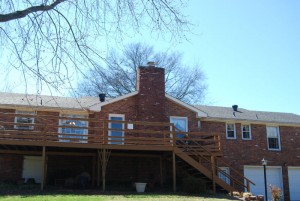Your fireplace is the focus of family gatherings and a great way to take the chill off during the coldest winter nights. For many homeowners, it’s a basic necessity. It can also be a source of danger to your home and family. A fireplace that is improperly cared for may start a fire where you don’t want one, namely inside your chimney. Although you remove them often, ashes indicate energy efficiency, showing that the fire completely consumed the fuel source. It’s what doesn’t turn into ash that puts your home at risk. Creosote is nothing more than unburned wood energy that builds up on your chimney’s inner surface.
Reducing the Likelihood of a Chimney Fire
According to the NFPA, the second leading cause of house fires is heating equipment, and two out of three heating equipment fires result from heating appliances, which includes fireplaces, chimneys and wood stoves. Of the fires that start in the chimney or fireplace, most are a direct result of creosote deposits. Sadly, most are preventable with regular inspections and maintenance. Prevent your home from becoming part of these statistics by scheduling routine chimney inspections to catch dangerous creosote before it catches you.
Keeping Your Chimney Clean Is Crucial
Regular chimney cleanings will remove the inevitable buildup of creosote and soot. Unfortunately, there’s no simple rule of thumb for when to do it. Don’t rely on the standard advice of having it done once a year or at some other set time. Clean your chimney when it needs it — when the creosote is thick enough to warrant cleaning. You’ll never be able to keep your chimney 100% creosote-free, but if left to sit, it will eventually harden into a stubborn glaze that’s even virtually impossible to remove without the proper tools.
Keep an Eye On Your Chimney
Obviously, if you notice smoke flooding into your house, soot covering your furniture, even dark smoke constantly flowing from your chimney, you should suspect creosote issues are at least partially to blame. Unfortunately, creosote isn’t going to RSVP to let you know it’s coming and could prove to be the most unwelcome houseguest ever! Until you know how much creosote your burning habits create, check your chimney regularly to monitor the accumulation so you can catch it before it gets out of hand.
Inspecting your chimney is critical to ensuring your house doesn’t become another house fire statistic. The chimney is inspected from inside the fireplace and then again from the top of the chimney. The entire process takes less than an hour or two for even the most cautious and painstaking inspection. The best course of action is to hire a professional to inspect your chimney prior to the beginning of the heating season and clean or repair it as necessary. The payoff for ensuring that your chimney is in prime working condition is priceless — peace of mind every time you build a fire. There are many things that can damage a chimney that you may never see. This is why getting a Comprehensive Chimney Inspection annually is the best way to keep your chimney safe and in good working order.

